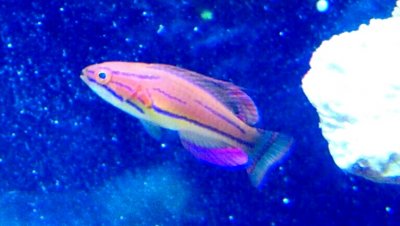The McCosker's Flasher Wrasse
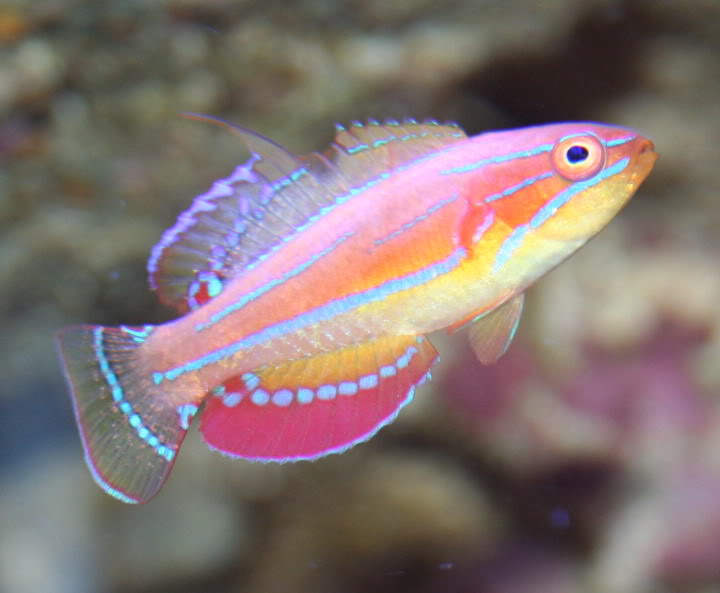

The McCosker's Flasher Wrasse or Paracheilinus mccoskeri is a flasher wrasse from the western Indo-Pacific, where they are found from the east coast of Africa to Fiji, and are most common in the waters of the Malay Archipelago. A truly stunning species, a generally peaceful disposition combined with hardiness and the added benefit of staying small makes P. mccoskeri truly one of the best suited wrasses for keeping in a reef aquarium. They grow to a size of approximately 3-inches in length.
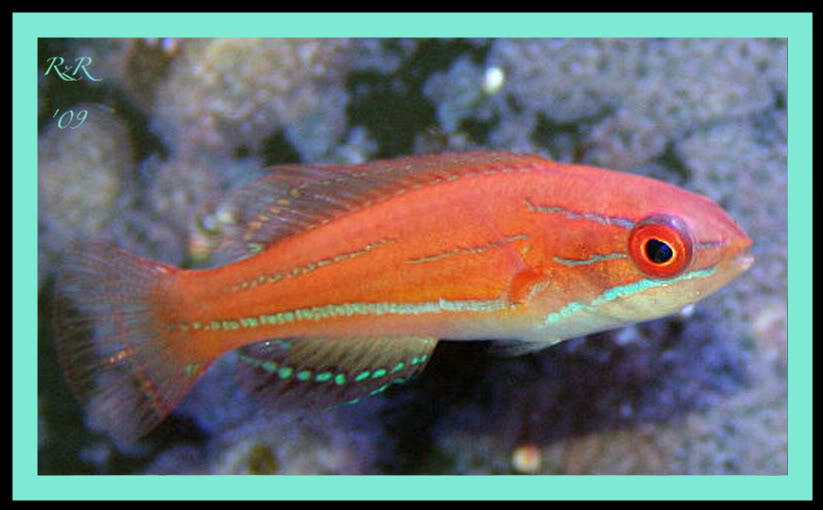
Male P. mccoskeri are known for their bright colors, gorgeous finnage and flashing behavior. The vibrantly colored males have a predominantly orange body which gets darker towards the top and blue horizontal stripes decorate both the body and the fins, complementing its almost yellow belly. The large orange dorsal fin is nearly the same color as the body on the anterior portion and fades to white and red on the posterior portion. It is accented with red, yellow, and blue and features a single elongated ray. The anal fin is also large and is orange with a bold red brand. The eyes are red. The female coloration and overal appearance is more subdued and they lack the large dorsal and anal fins of the male. The colors of the dominant adult male intensifies during courtship and he will "flash" his fins to attract females or as a dominance display to other males. While P. mccoskeri is similar in appearance to the Carpenter's flasher wrasse (Paracheilinus carpenteri), they are easily destinguished by the presence of their single elongated dorsal filament.
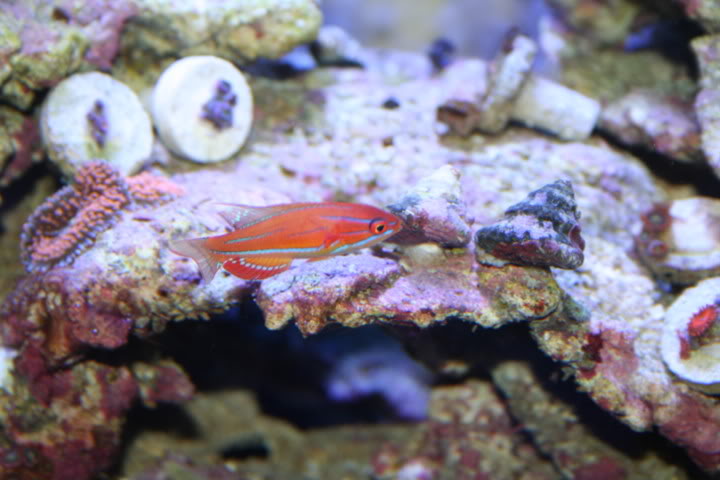
If you plan to keep a harem (which is recommended for maximum flashing and displays by the male), add the females first, let them establish, then add the male. Be advised however that P. mccoskeri are protogynous hermaphrodites; depending on social interactions, wrasses that are born as female can and will turn to males in as little as 10 to 14 days. Groups of multiple males and females do occur in nature, and this can be replicated in a larger aquarium. Be wary about adding multiple males, however, as they may quarrel and cause undue stress. It is generally preferred to add all members of a multiple sex group at once, and multiple males should only be added if you have a larger tank.
P. mccoskeri should be kept in a minimum aquarium size of a 20gal Long (likely larger if you intend to keep a harem) fitted with a tight lid. In the wild, these wrasses are found along reef slopes and rubble zones, and therefore the aquarium should contain plenty of live rock rubble piles or rockwork to retreat into. Additionally, they need a tank with a nice sandbed, as they will dive into and hide within the sand when frightened, and burrow within it or the rockwork, secreting a mucus cocoon, to sleep at night.
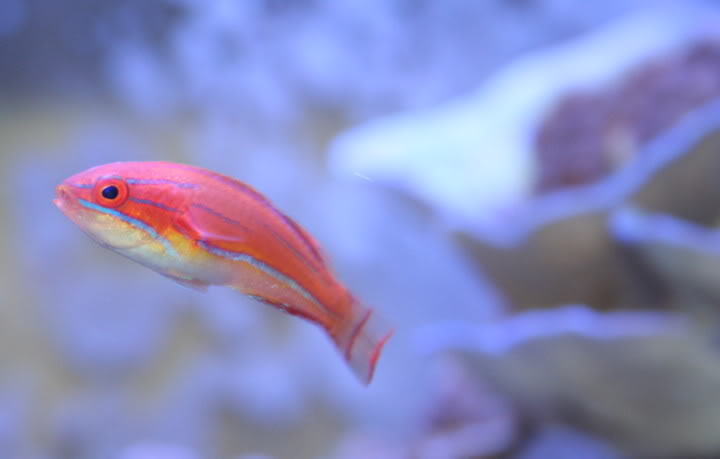
Being zooplanktivores, P. mccoskeri are avid hunters, and will often cruize around the liverock hunting benthic crustaceans such as copepods, mysids, and worms. They will keep "pod" populations relatively low, so be wary about purchasing dragonets such as Mandarins or "Scotter blennies", as the wrasses will often outcompete the dragonets for food. Generalist carnivores, P. mccoskeri readily accept a varied diet of finely chopped bits of raw meaty sea foods, such as clams, fish, mussels, shrimp, and squid or frozen foods like daphnia and brine shrimp. Raw table foods should be frozen or briefly microwaved to minimize the chances of infecting your livestock with parasites. Supplement raw meaty marine food with some vegetable matter such as flake food or seaweed strips. Alternatively, a refugium well stocked with pods will provide a constant supply of small live foods. Like all flasher wrasses, P. mccoskeri has a high metabolism, and should be fed several small meals a day rather than one or two large meals. Be aware that P. mccoskeri are easily bullied, so be sure to keep them with peaceful tankmates that will not outcompete them for food.
Optimal conditions for P. mccoskeri are; pH 8.1-8.4; salinity 1.020-1.025; and temperature 72-78 degrees F.
Last edited:







